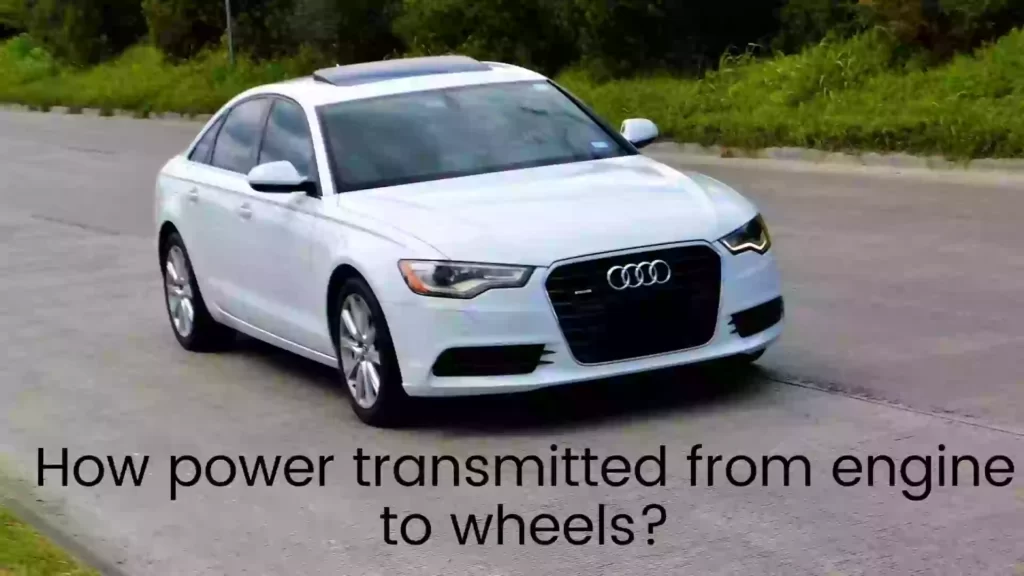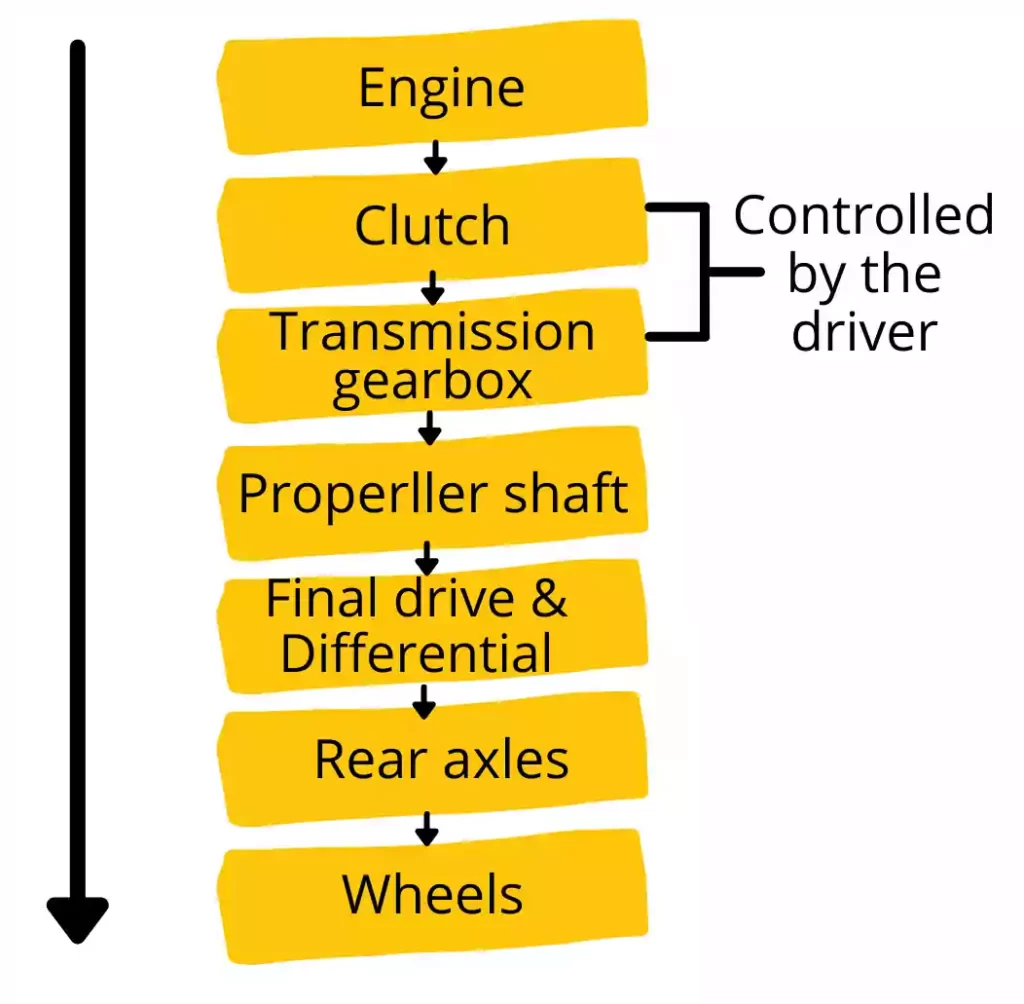It is difficult to understand the power transmission from engine to wheels by externally observing the vehicle because the power transmission system consists of many vital components and every component has its own role in transmitting power.
This article will help you to understand power transmission from the engine to the wheels along with its components and the role of each component.
In automobiles the power is transmitted from the engine to wheels in the following sequence: Engine – Clutch – Transmission gearbox – Propeller shaft – Final drive and differential unit – Wheel axles – Wheels.

Components that connect an engine to the wheels:
The power from the engine to wheels is transmitted through the following components:-
1] Clutch:
The clutch handles the engagement and disengagement between the engine shaft and gearbox shaft. when the driver press the clutch pedal, the engine and gearbox get disengaged from each other and when the driver releases the pedal it again gets engaged with each other. therefore clutch helps to avoid damage to the gearbox while shifting of gear or while stopping the vehicle.
2] Transmission gearbox:
The engine operates only at a constant speed for a certain amount of throttling. The engine provides higher torque at higher RPM and lower torque at lower RPM but the vehicle requirement for torque and speed depends on the condition of the road.
It means that for moving on a straight road the vehicle requires lesser torque at a higher speed and while climbing a hill the vehicle requires higher torque at a lower speed.
Hence the transmission gearbox helps us to convert the torque and RPM output from the engine as per the condition of driving.
3] Propeller shaft:
The propeller shaft is connected between the transmission gearbox and the final drive unit. The propeller shaft has a slip joint and a universal joint that helps to compensate for angular and linear fluctuations while moving on bumpy Road.
- Read here: Car engine to wheel connection
4] Final drive:
The final drive is used for the following main functions:
A] The propeller shaft and rear axles are perpendicular to each other therefore the final drive help to transmit power from the propeller shaft to the rear axle in a perpendicular direction.
B] It also helps to split the power from the propeller shaft to the two half rear axles.
C] The final drive is also used for the final fixed speed reduction.
For all this purpose the final drive is consist of bevel or hypoid gears which help to transmit the power when the axis of shafts are not parallel.
5] Differential unit:
The purpose of the differential is to compensate for the speed of tyres while moving on the curved Road.
Example:- In the case of a moving vehicle on a curved road, the Inner Wheel has to trace a shorter path while the outside will have to trace a comparatively longer path. In this condition both the rear wheels operate at different angular speeds. therefore the differential helps to alter the angular speeds of both wheels. Hence both wheels can easily move at different speeds.
6] Rear axles:
The two half axles are connected to the differential unit of the vehicle which is further connected to the wheels.
How power transmitted from engine to wheels?
The following figure will help you to understand the flow of power from the engine to the wheels:-

The transmission of power from the engine to wheels is done in the following steps:-
Step 1: Engine to transmission gearbox through clutch:
The IC engine gets power from the combustion of fuel inside of the combustion chamber and this power is utilised for rotation of the crankshaft. The output shaft of an engine is connected to the input shaft of the transmission gearbox through the clutch.
The clutch is manually or automatically operated that facilitate the engagement and disengagement of the engine and gearbox shaft in running condition. Hence when the clutch is in the engaged condition the power is transmitted from the engine shaft to the gearbox input shaft.
Step 2: Transmission gearbox to final drive through propeller shaft:
The transmission gearbox converts the single torque and speed of the engine into multiple stages with different torque and speeds.
The output shaft of the gearbox is connected to the propeller shaft and the propeller shaft is further connected to the final drive.
Therefore the power is transmitted from the gearbox to the propeller shaft and further, it is transmitted from the propeller shaft to the final drive.
Step 3: Final drive and differential unit to the wheels through rear axles:
Final drive and differential help to split the power taken from the propeller shaft to both side half axles on which the wheels are mounted.
Therefore the power is transmitted from the final drive to the rear axles and further, it is transmitted from the rear axles to the wheels of the vehicle.
Conclusion:
Therefore clutch, gearbox, propeller shaft, final drive and differential axles are the components that connect the engine to the wheels. Therefore the power of the engine can transmit to the wheels for moving the vehicle on road.
You may also like these:
I have really appreciate you for the ideas that you have provided for me.